Meet Design Guild Mark Judge Simon Alderson
Each designer awarded a Design Guild Mark for a piece of their work can be confident that they have created a design which demonstrates design excellence. The Design Guild Mark judging process is rigorous, involving a carefully selected panel of industry leading design professionals. Within this series we will introduce you to a selection of the Design Guild Mark judges, learn about their design ethos and which previous winners particularly caught their eye. We continue our series by meeting Simon Alderson, Co-Founder of twentytwentyone.
Applications are now open. Don’t miss the extended final deadline: 28th January 2022. Find out more about criteria, categories and application process by clicking here.

Simon Alderson co-founded twentytwentyone in 1996. The award-winning company is internationally respected for its carefully curated retail business. twentytwentyone has a dedicated commercial sales team working with architects and designers on progressive interiors projects. The company also produces a small collection of furniture and accessories and acts as exclusive UK agents for several international design collections.
When discussing the Design Guild Mark 2021 Simon said:
“The first year for the lighting Mark was both stimulating and significant. It was important to set the tone for a new design medium at DGM, and inspiring to meet a diverse group of designers. The breadth of materials, process and approach was super, and the challenge for the judges was to filter and define the criteria to distinguish merit. The designer’s virtual presentations worked well, many with creative flair, and the one-to-one sessions were extremely constructive. The Lighting Mark is off to a good start and shows great potential to shine brightly.”
What does design excellence mean to you?
Design excellence is like a good recipe. A balance of key ingredients that include functionality, aesthetics, responsible production and material use, price and a healthy pinch of personality. Without one, or too much of another, the recipe can deliver a poor dish. Design excellence has the opportunity to improve lives, at home and in the workplace. Its imperative that design education, design investment and design understanding are given weight, promoted and endorsed, if we are to drive excellence.
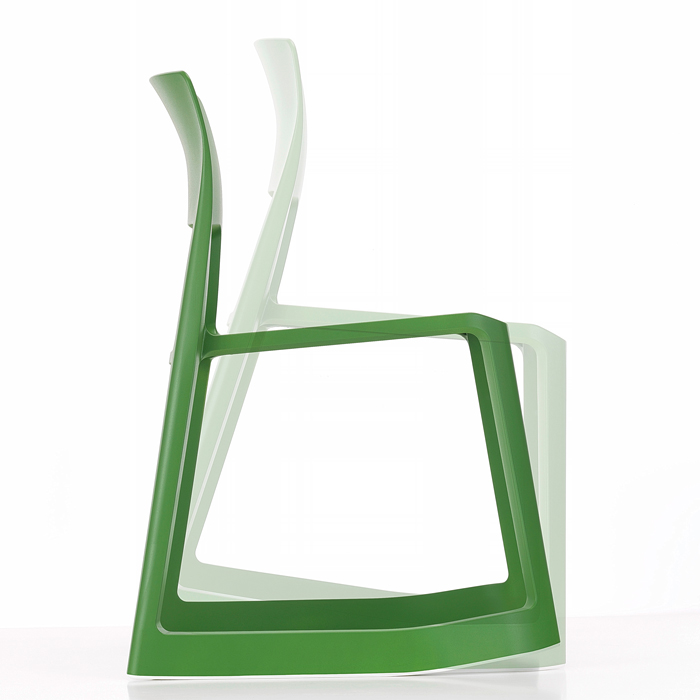
DGM 77 Tip Ton by Barber Osgerby, 2013
What is your personal approach to design/design ethos?
It’s important that design quality, lifespan and value combine. New design should endure and there is much to be learnt from historical references. The classics provide valuable resource, as they might in other professions and disciplines, and with this in mind a new design must innovate and should take a responsible approach to sustainability.
Why is it important to you to support the Design Guild Mark?
The Design Guild Mark provides an open platform for work to be recognised and lauded. Communication of the designer’s thoughts and processes are given voice and this important explanation can allow for greater understanding. DGM celebrates British origins whether the designer is simply working or was born here, and one hopes our fostering this creativity will allow for wider dissemination.
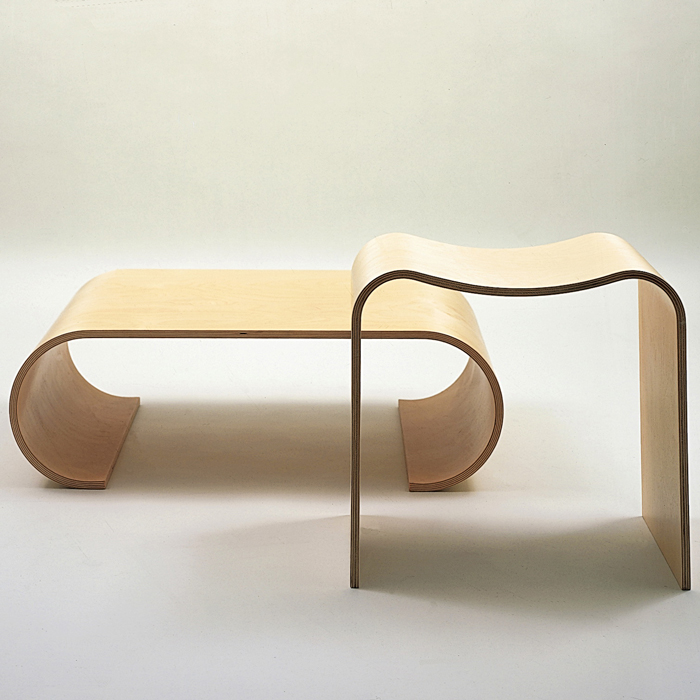
DGM 68 Corin-Mellor Beech Plywood Furniture for David Mellor, 2012
What are you looking forward to discovering within the 2022 entries for the Design Guild Mark?
Its always exciting to see new work, and to hear first-hand about the designer’s approach. Emerging talent, new creations by an established designer or reintroduction of a classic are equally anticipated.
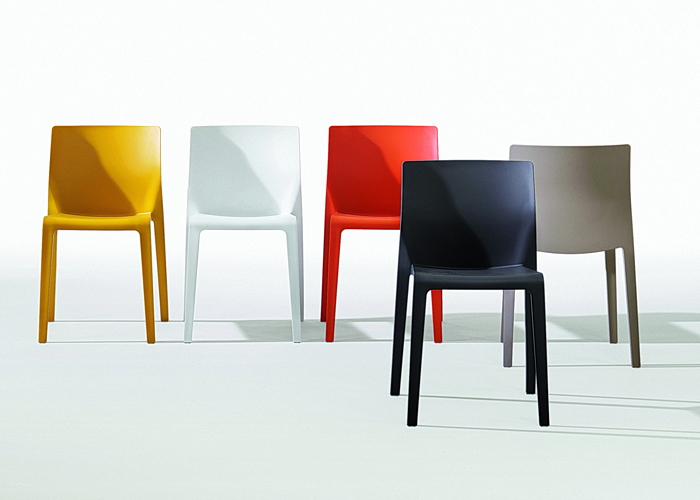
DGM 88 Juno for Arper by James Irvine, 2013
Which previous winning design particularly caught your eye and why?
The enduring designs from Robin Day and Rodney Kinsman, and simple things like the Multi Drawer by Frederick Brown express wonderful longevity and subtle personality. I suspect we could see similar lifespan from the contemporary winners, there are certainly many that hold the potential.

Robin Day, 1956
DGM 184: Robin Day Polyside Chair by Robin Day for Hille
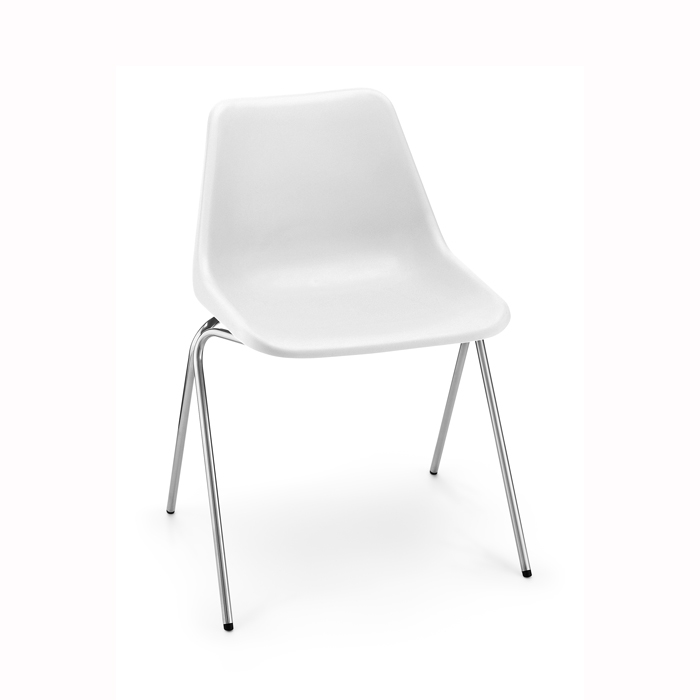
DGM 184 Robin Day Polyside Chair by Robin Day for Hille
In 1963 Robin Day and Hille recognised the potential of polypropylene, a relatively new material produced by Shell Chemicals, to manufacture a chair shell which would offer a low-cost, light and durable alternative to conventional wooden seating for general use in public spaces. Relying largely on an intuitive sense of the potential of the new material, Day carried out laborious experiments with paper mache covered wooden structures to develop a form both structurally sound and aesthetically satisfying.
The P5 stacking frame requires only two welds where front and back legs meet at the sides. These exposed and expressed joints make a significant contribution to the chair’s distinctive aesthetic and are typical of Day’s work. A very wide variety of bases were developed for different applications, but the P5 stacking version of the chair remains iconic.
DGM 137: OMKSTAK Stacking Chair by Rodney Kinsman for OMK
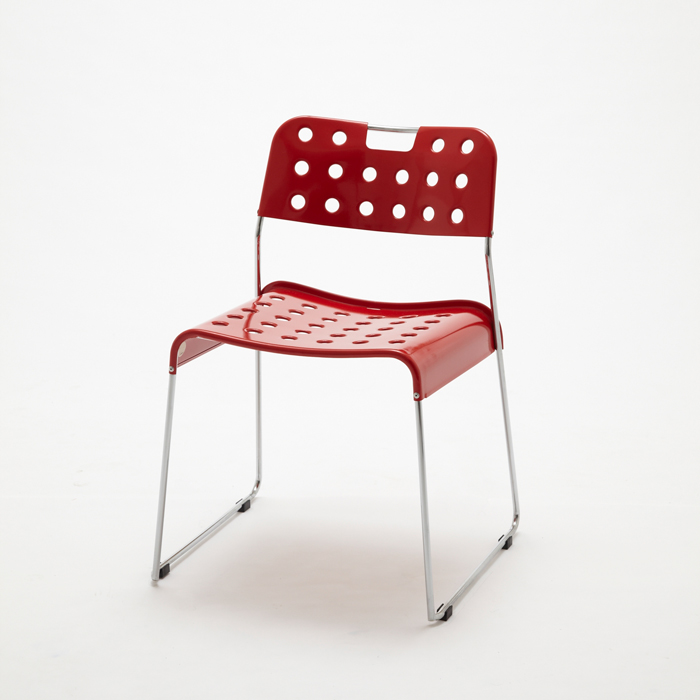
An all steel light weight stacking chair, comprising a tubular frame and a pressed steel seat and back. The monocock seat panel is the main structural element eliminating the need for cross rails. Punched holes with turned down flanges serve a dual purpose of reducing weight and strengthening the sheet. The back panel incorporates a handle allowing single handed stacking up to 25 seats high without the need for a rack. Rodney stated:
“As a design-led UK manufacturing company, I feel this endorsement of our latest product enhances our international credibility.”
DGM 167: Multidrawer by Frederick Brown for Bisley

It was the rapid growth of colourful plastic lettertrays through the 1950’s and 60’s which became the inspiration for the original Bisley Multidrawer cabinets. Freddie Brown thought that he could produce a product which achieved the same storage capability but was more durable and make them available in a wide range of colours. This was quickly adopted by Ryman Conran (as it was then) who added them to their ‘Colourways’ product portfolio and featured them in their fantastic window displays. Over the years the range of options has been increased and the manufacturing methods improved but the original appearance has remained unchanged. Today Multidrawers are used in offices homes, shops, sheds and garages for a multitude of uses all of which help people all over the world keep themselves organized.
Design Guild Mark. An award for excellence in British design.
The prestigious Design Guild Mark is awarded by The Furniture Makers’ Company in order to drive excellence and raise the profile of British design and innovation. Applications are now open. Don’t miss the extended final deadline: 28th January 2022.
Find out more about criteria, categories and application process by clicking here.




